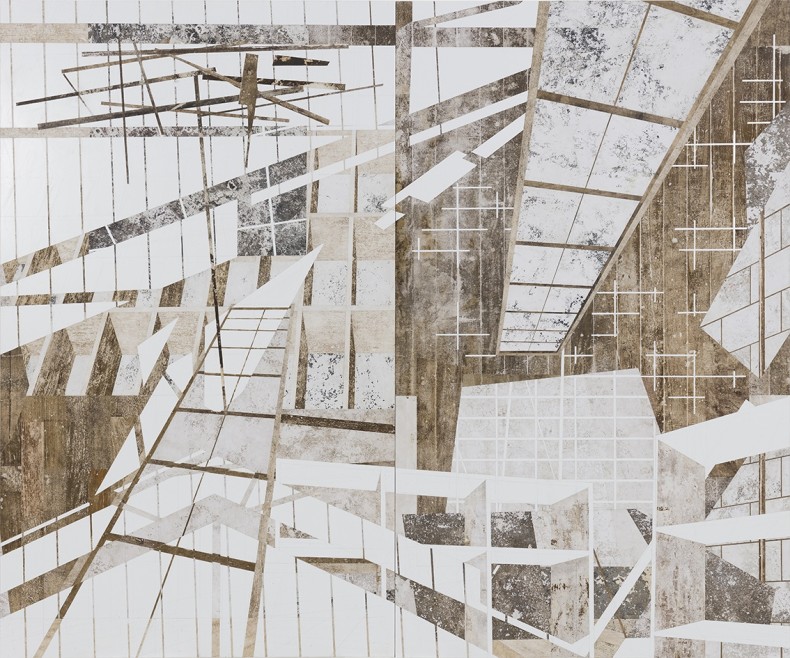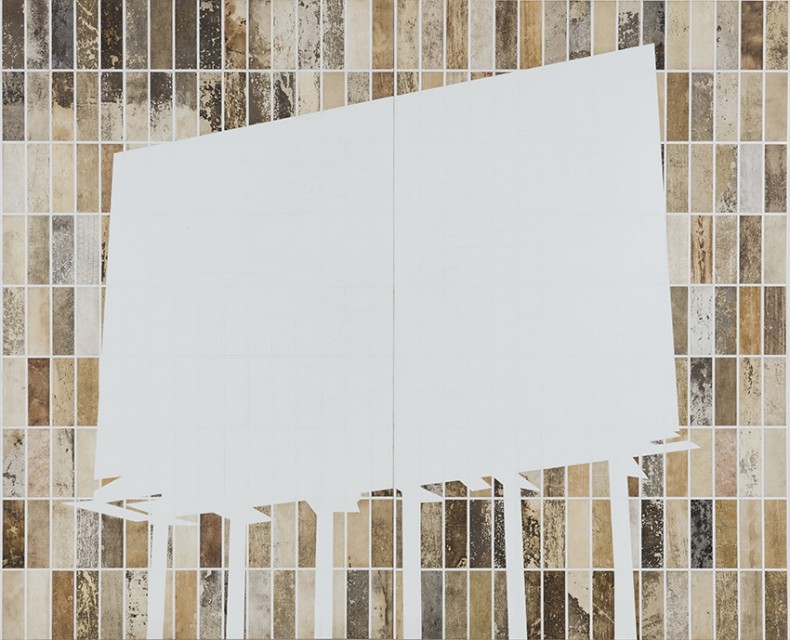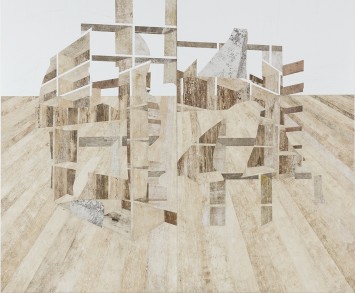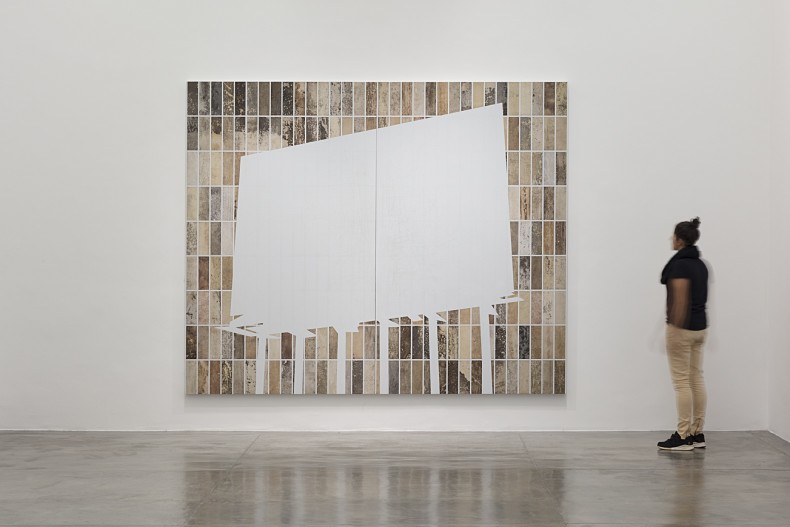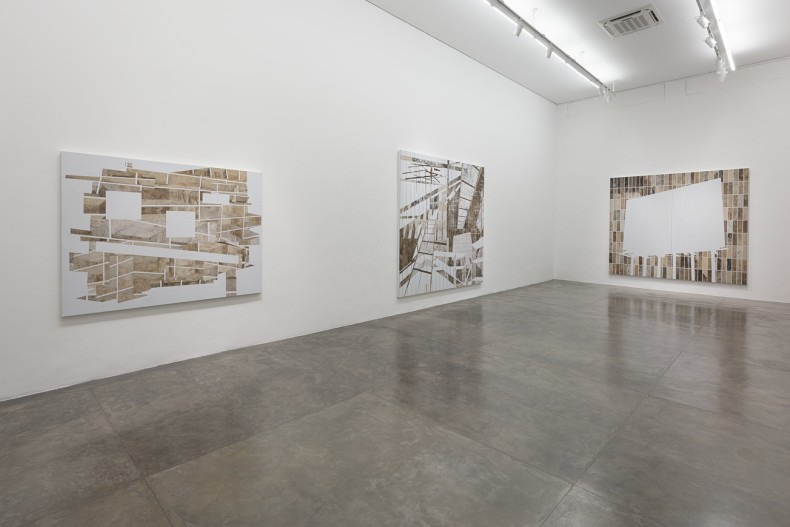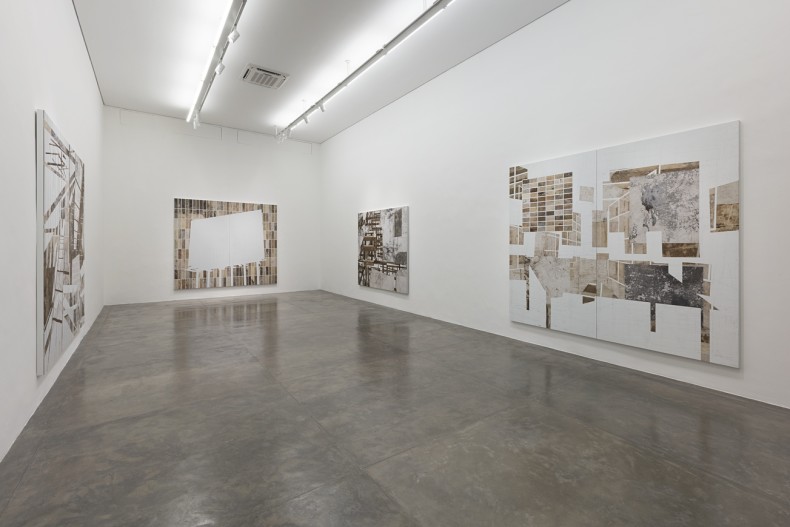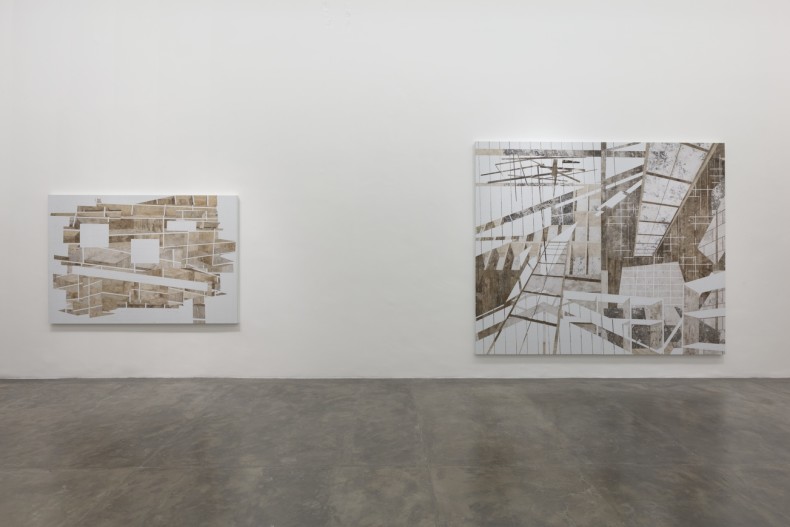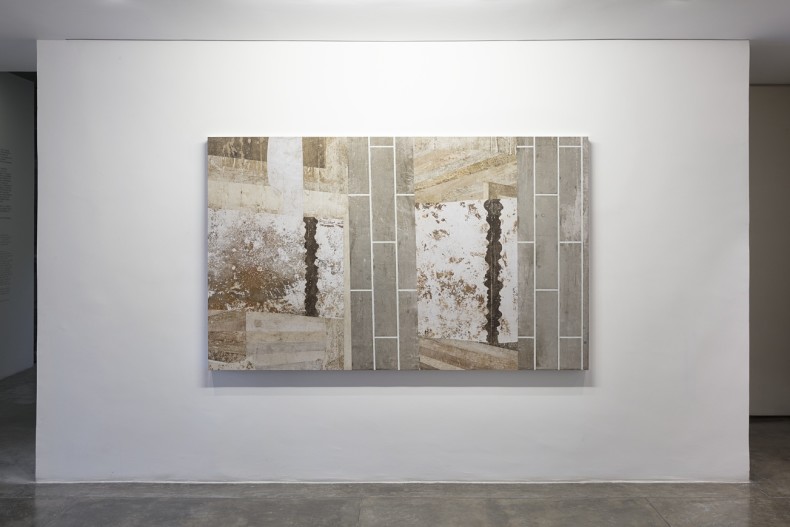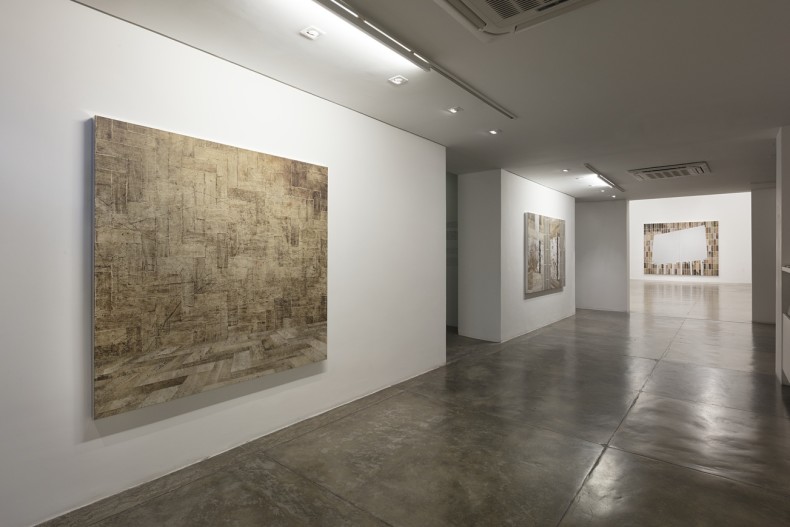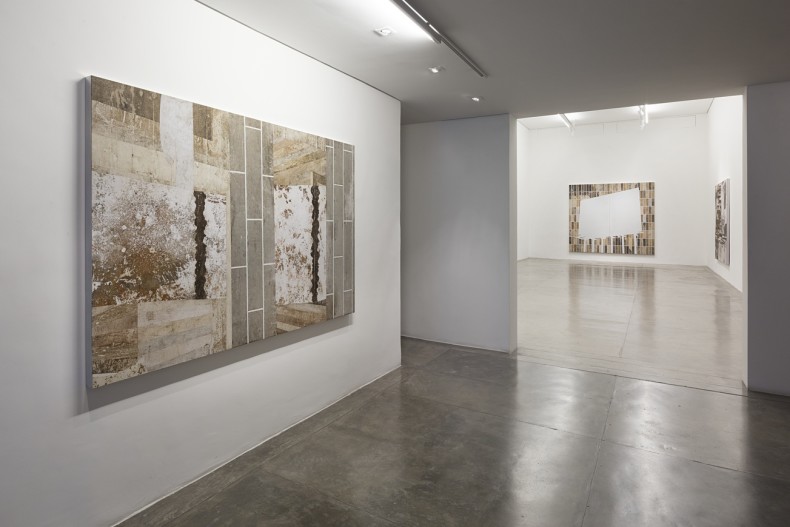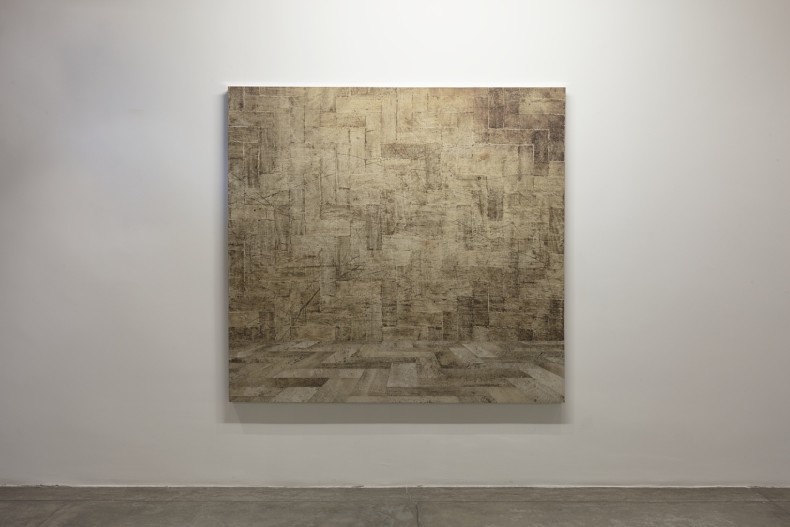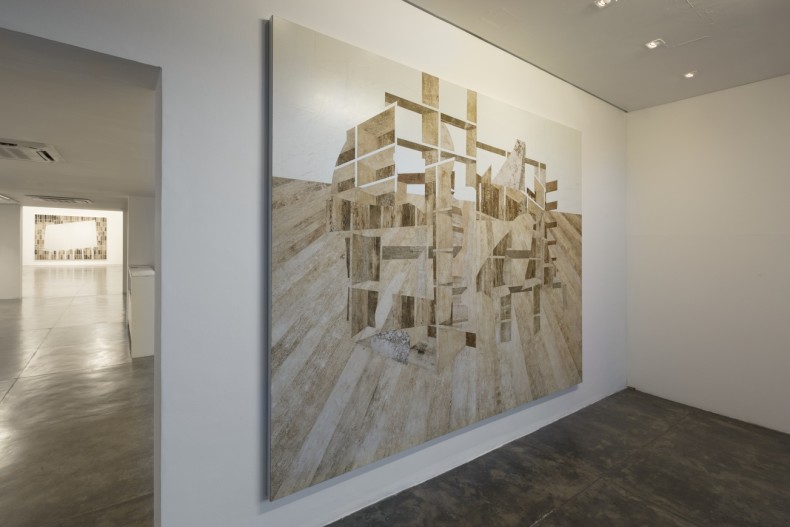Galeria Nara Roesler presents the it’s first exhibition of Brazilian artist Daniel Senise, since he joined their roster in 2016. This exhibition is curated by Brett Littman, Executive Director of The Drawing Center in New York.
Senise, since the late 1990s, has been engaged in what can be best described as “image construction.” His process starts with imprinting surfaces and material conditions – like wooden floors or concrete walls - onto cloth. These imprints are then collected into an archive in his studio and later are cut and mounted onto to aluminum panels as backgrounds or as architectonic structural elements for his complex spatial compositions. Senise’s works can made up of conglomerations of many different fragments of his imprints spanning many years. As well, unfinished or rejected panels are often re-combined and repurposed, by adding and removing cloth elements, in service of new ideas he is exploring in his studio.
Senise has been exploring more reductive compositional strategies since 2011, when he made his large-scale installation work entitled 2892, two high white-walls made up of stained sheets collected from an intensive care unit of a hospital and a love hotel supported by wooden armatures. This work, which substituted stained sheets for his cloth imprints, visually reference shrouds as well as white on white works by artists like Kazimir Malevich and Robert Ryman. Later in 2011, Senise began a new series of works called Quase aqui (Almost Here) in which he used a thick wooden board as a table in his studio and recorded the various cutting and mark making activities of himself and his assistants over a duration of time. Later, a large rectangular area in the center of the panel was filled, sanded and airbrushed with white paint, to create an optical void. These works are very subtle and almost totally devoid of easily readable visual content – they require close looking on the part of the viewer to truly understand the processes involved in making them. In 2013, after the death of his father, Senise started the Biógrafo (Biographies), a series of 85 panel works. This series is linked visually to the Quase aqui works by the introduction of a rectangular form into the center of their composition, however, they re-introduce the cloth imprints and are much denser and optically destabilizing due to the fact that he rotates the panels during their construction and thus is constantly shifting their perspective. Lastly in 2014, Senise began a series of painting based on famous museum interiors. This series starts with visually dense panels like National Gallery, 2014 and Gemäldegalerie, Berlin, 2014, that attempt to represent architectural elements and with empty framed painting on the walls. Gradually as the series moved on he began to subtract materials in works like Siza I and II, 2014 and Hermitage, 2017 so the bare minimum of visual references is left that still allow the viewer to be able to identify the specific museum gallery architecture.
The paintings in the current exhibition at Nara Roesler, find Senise in a transitional mode – as he balances his more recent reductive impulses with his relentless internal search for new ways to make images. The group of works in the large gallery and the window space give a clear indication of the dual polarities of Senise’s current output. Billboard, Billboard 1 and Escultura, all made in 2016, share similar compositional strategies. Here, Senise has taken older completed panels and over time has removed or cut away the cloth elements to expose the aluminum substrate and all of the attendant marks and scrapes that were made through their creation and subsequent deconstruction. These three works extend the explorations of subtraction, “unmaking” and the revealing of time through marks/stains that Senise began to explore in 2011 in the 2892 installation, in the Quase Aqui series and in his most recent museum interior pieces. As well, the billboard form, which essentially is a rectangle floating in space, refers us back to the geometry of the Quase Aqui and the Biógrafo works.
In Skylight, Night Studio (both made in 2017) and A Floresta do Livre Arbitrio (The Forest of Free Will), 2016, Senise has returned to a familiar theme and image in his oeuvre – his own studio. In these works, however, the studio now represents the internal search for new compositional methods and ways of seeing. These are personal landscapes where the studio stands for the place of isolation and solitude where the artist can contemplate space, time light and the night sky. These works are more visually activated and structurally but they also contain passages of removed material and exposed substrates as well as references to the rectangle which inextricable bond them to Billboard and Escultura.
The exhibition also includes three new Biógrafo works (LV, LXXVII and LXXXIV, 2017) and two smaller untitled panels made in 2016 and 2017, which are more closely related to the graphically accumulative work that Senise made in the 2000s.


